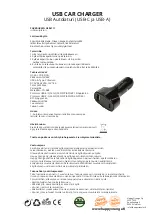
PG7000™ OPERATION AND MAINTENANCE MANUAL
© 1998-2008 DH Instruments, a Fluke Company
Page 52
3.9.4
[MODE]
PURPOSE
To specify the measurement mode (gauge, absolute, differential) in which PG7000 defines
reference pressures.
Pressure measurement mode and unit of measure are not the same thing.
See Section 3.9.3 for information on the pressure unit of measure.
PRINCIPLE
Pressure defined relative to absolute zero or vacuum is generally referred to as
absolute
pressure
.
Pressure defined relative to atmospheric pressure is generally referred to as
gauge pressure
,
with pressure below atmosphere called
negative gauge pressure
.
Pressure defined relative to another pressure that may be, but is not necessarily atmospheric
pressure, is generally referred to as
differential pressure
.
PG7000s (depending on the model) can define absolute, gauge, negative gauge and
differential pressures. These are referred to as measurement
modes
.
The specific PG7000 measurement modes are as follows:
•
gauge
: Defines gauge pressure by leaving the PG7000 mass load open to
atmosphere. This measurement mode is supported by all PG7000 models. It does not
allow negative gauge pressures. The minimum gauge pressure is the pressure resulting
from loading the combined mass of the piston and the bell on piston-cylinder effective
area.
•
absolute by adding atmospheric pressure (absolute by ATM)
: Defines absolute
pressure by defining a pressure in the same manner as in
gauge mode
and adding the
value of atmospheric pressure measured by a barometer. This measurement mode is
supported by all PG7000 models. The barometer can be PG7000’s on-board sensor or
a remote RS232 barometer. The uncertainty on the value of atmospheric pressure
measured by the barometer must be considered but this value can become relatively
small as pressure goes up. For example,
if using a ± 0.01 % barometer, the added uncertainty
at 1 MPa (150 psi) is 10 ppm.
This mode is more convenient and less costly than
absolute by vacuum
since no
vacuum reference needs to be established. However, it does not allow absolute
pressures under atmosphere and the minimum absolute pressure is atmospheric pressure
plus the pressure resulting from loading the combined mass of the piston and the bell on
the piston-cylinder effective area.
•
absolute by vacuum (absolute by vac) (PG7601 only)
: Defines absolute pressure by
measuring relative to an evacuated bell jar. This mode is time consuming as the vacuum
under the bell jar must be made and broken to adjust the mass load for each pressure to
be set. This mode is required for setting absolute pressures under atmospheric pressure
and for lowest uncertainty under about 1 MPa (150 psi).
•
differential (dif) (PG7601 only)
: Defines differential pressures at an absolute static
pressure between vacuum and two atmospheres by defining an absolute pressure
relative to an evacuated bell jar and subtracting static pressure monitored by a digital
pressure indicator. An offsetting technique ensures that only the digital indicator’s
resolution and very short term repeatability influence the measurement results.
Allows positive and negative differential pressure (including gauge pressures) with one
common hardware setup. Covers pressures very near and at zero without limitations
due to piston-cylinder size and mass loads (see Section 3.9.4.1).
















































